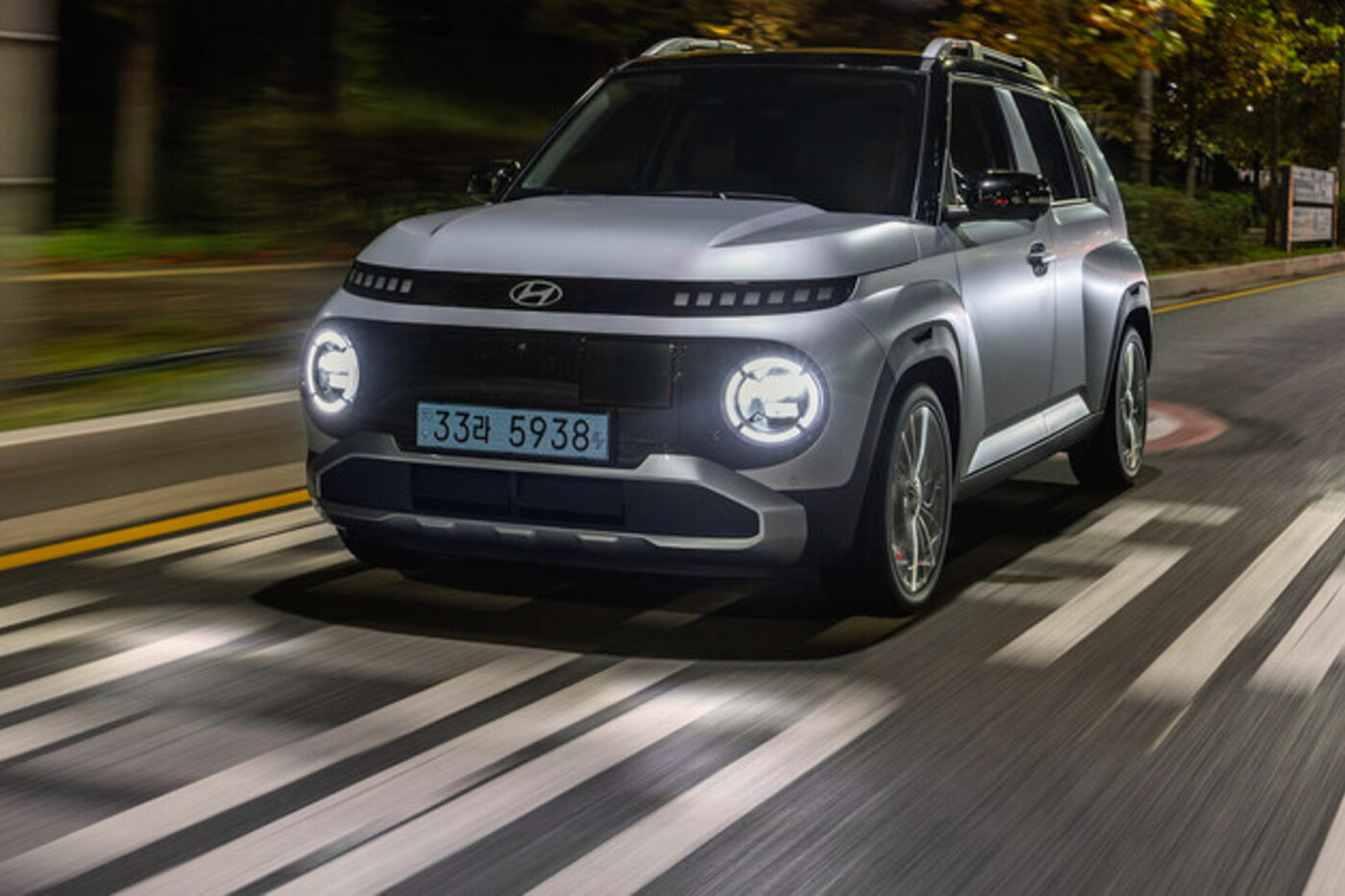
How the Inster wants to become Hyundai’s most successful electric car
Hyundai aims to make a small entry with a big bang. When the car manufacturer launches the Inster from Korea at the turn of the year for prices starting at just under 24,000 euros, its new entry-level model will reduce the price of the switch to electric by around a third. The Inster also slips below European competitors such as the Citroen e-C3, the announced basic version of the Renault R5, or the VW ID.2 if it finally makes it onto the road. Only the Dacia Spring or the Leapmotor T03 will be even cheaper, but they also offer significantly less bang for your buck.
The Inster is comparatively small at 3.83 metres (approx. 12.5 feet) and unusually narrow at 1.61 metres (approx. 5.3 feet). While the 2.58-metre wheelbase (about 8.5 feet) offers enough space for the knees and 280 to 351 litres of cargo space (around 10-12 cubic feet) for the suitcases (1,059 litres with the rear seats folded down), a certain emotional closeness between the occupants can’t hurt with the snug shoulder room. In the jungle of the big city, its modest size is an advantage, and the little car really comes into its own with parking.
With striking plastic wheel arch trim, a beefy appearance and roof rails, the Inster is by no means a fragile-looking vehicle. On the contrary, it exudes the robust appearance of an urban off-roader, which will later be emphasized in a burlier cross version. And just so no one has to be afraid of an intimidating appearance, there are friendly saucer eyes at the front and rear and rounded corners all around – a bit as if a Fiat 500 shared a parking lot with Jeep Renegade for too long, smiles chief designer Simon Loasby.
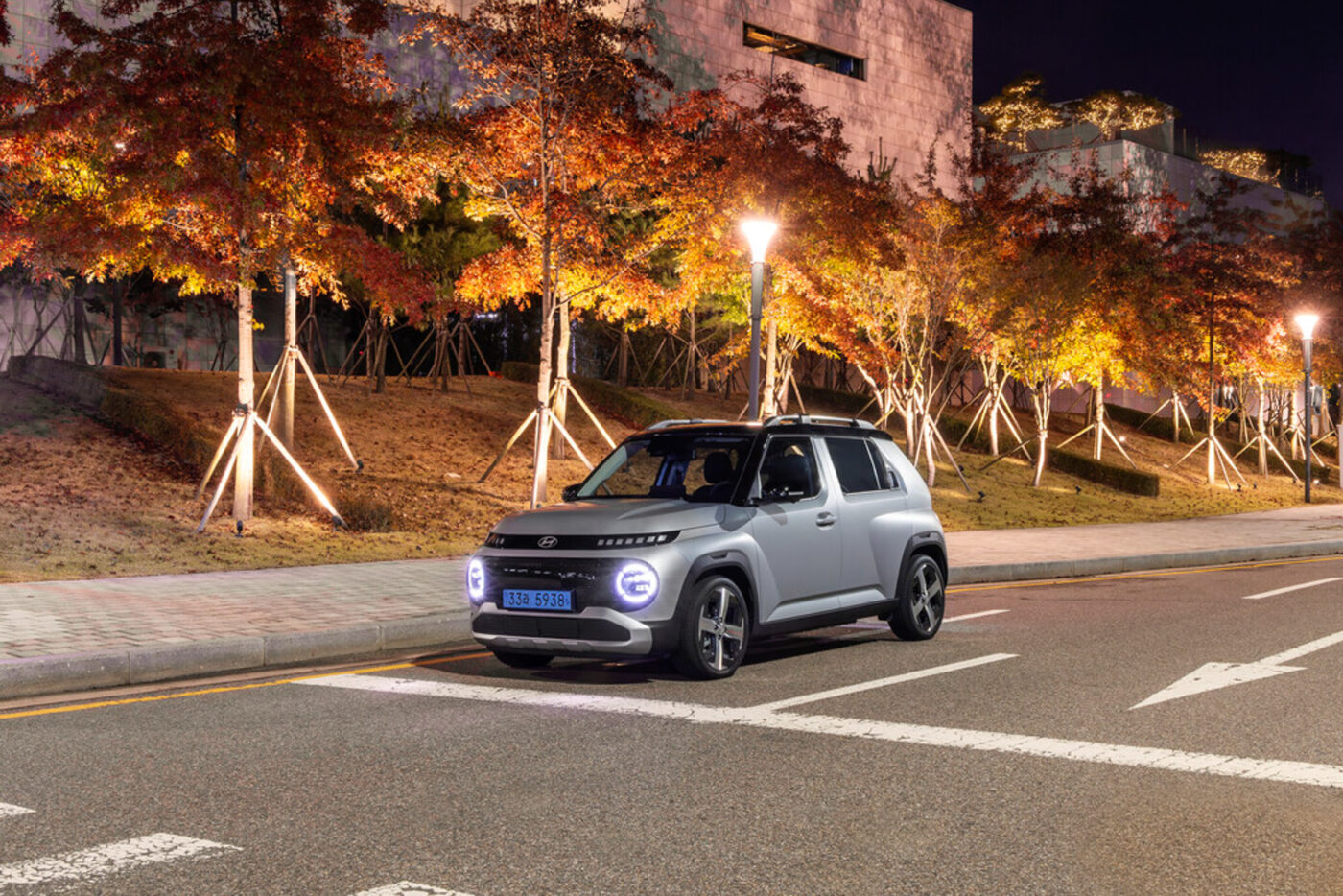
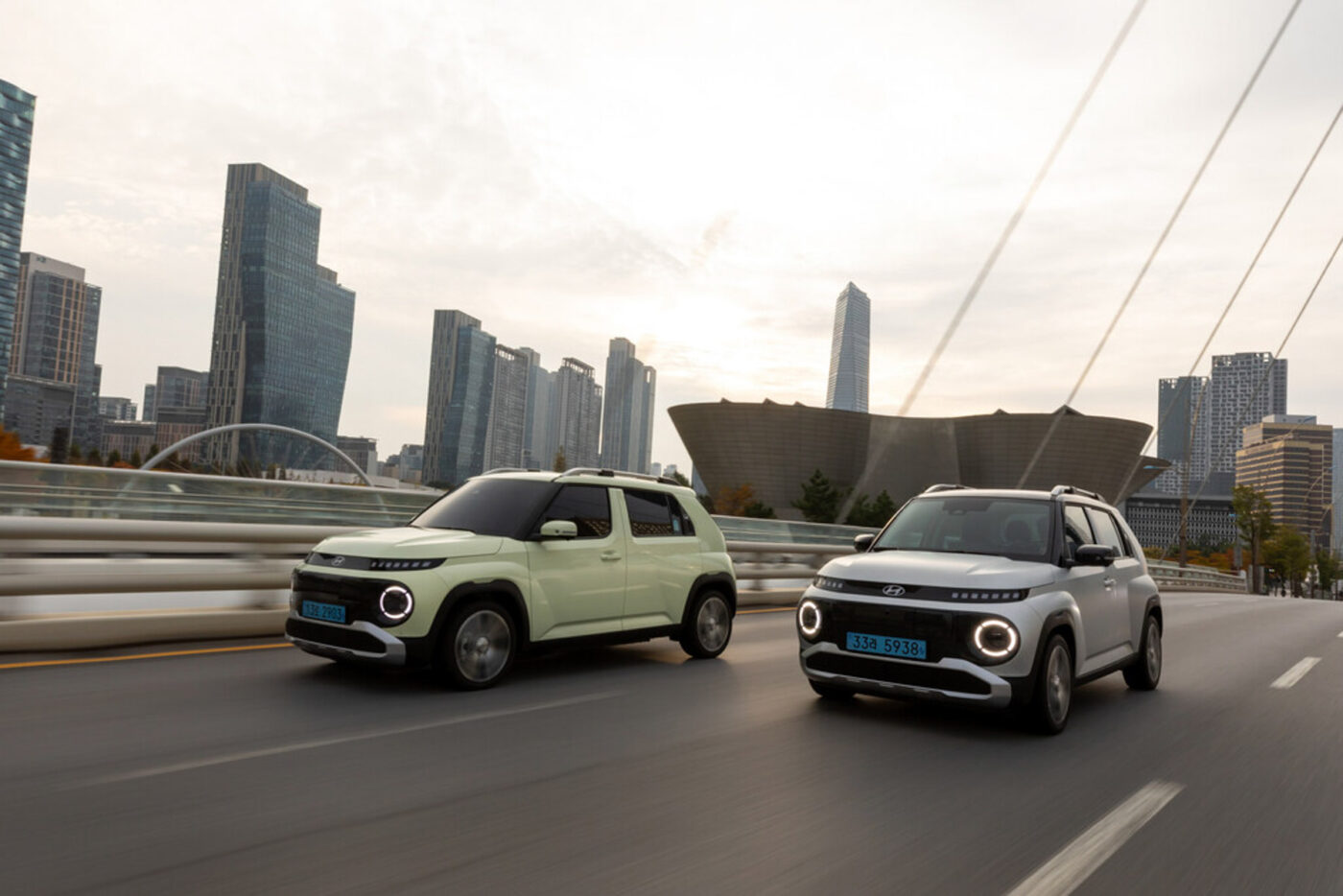
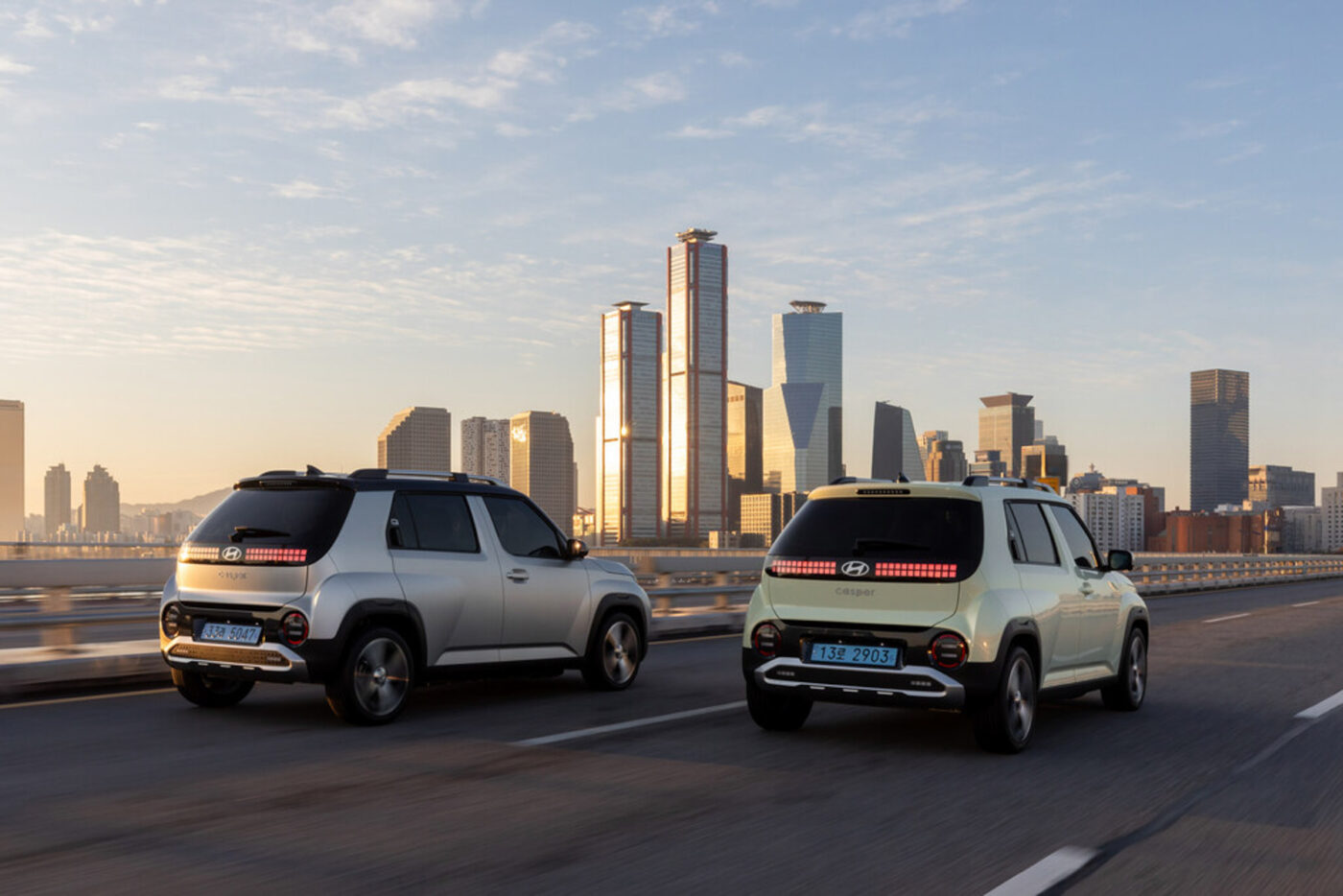
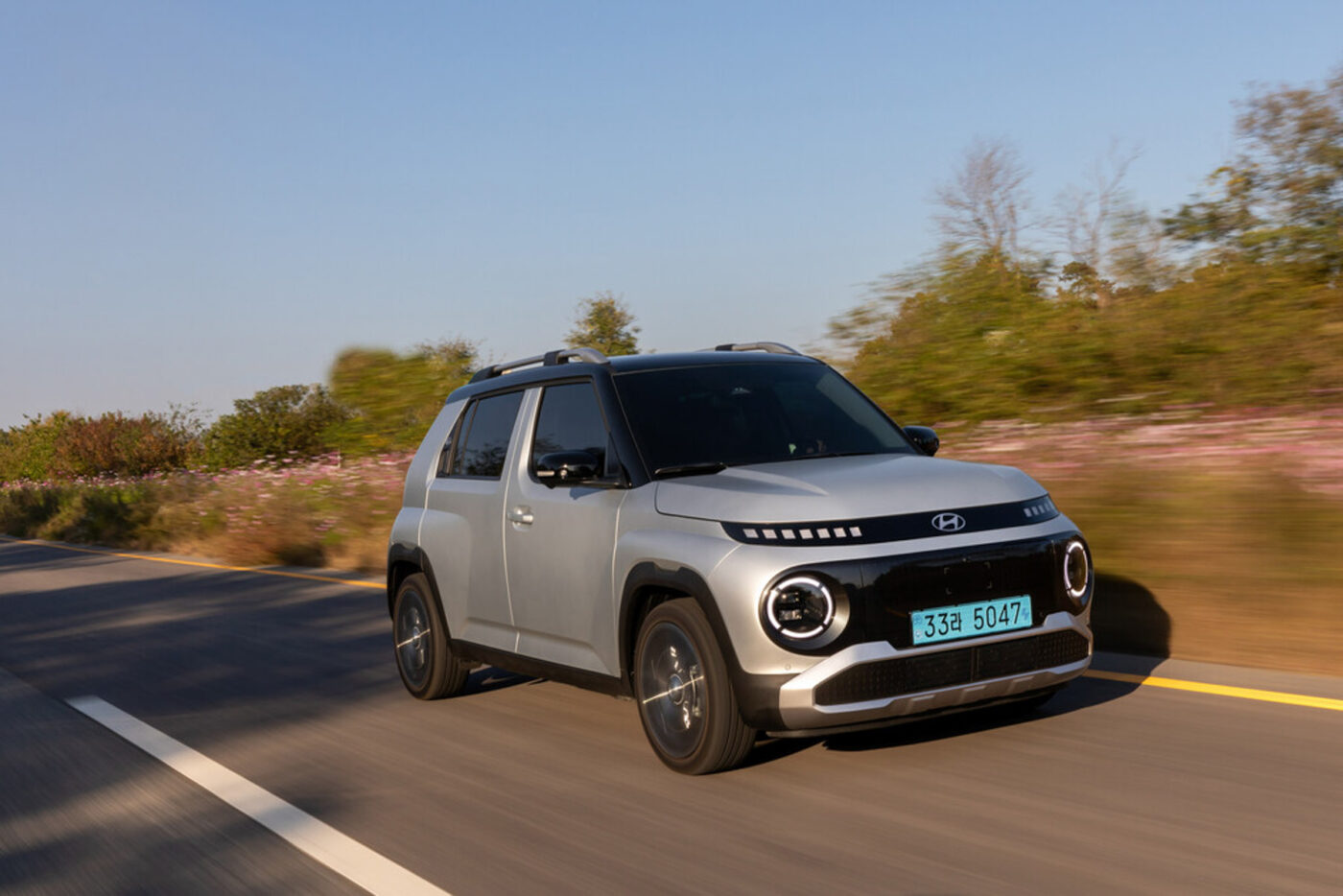
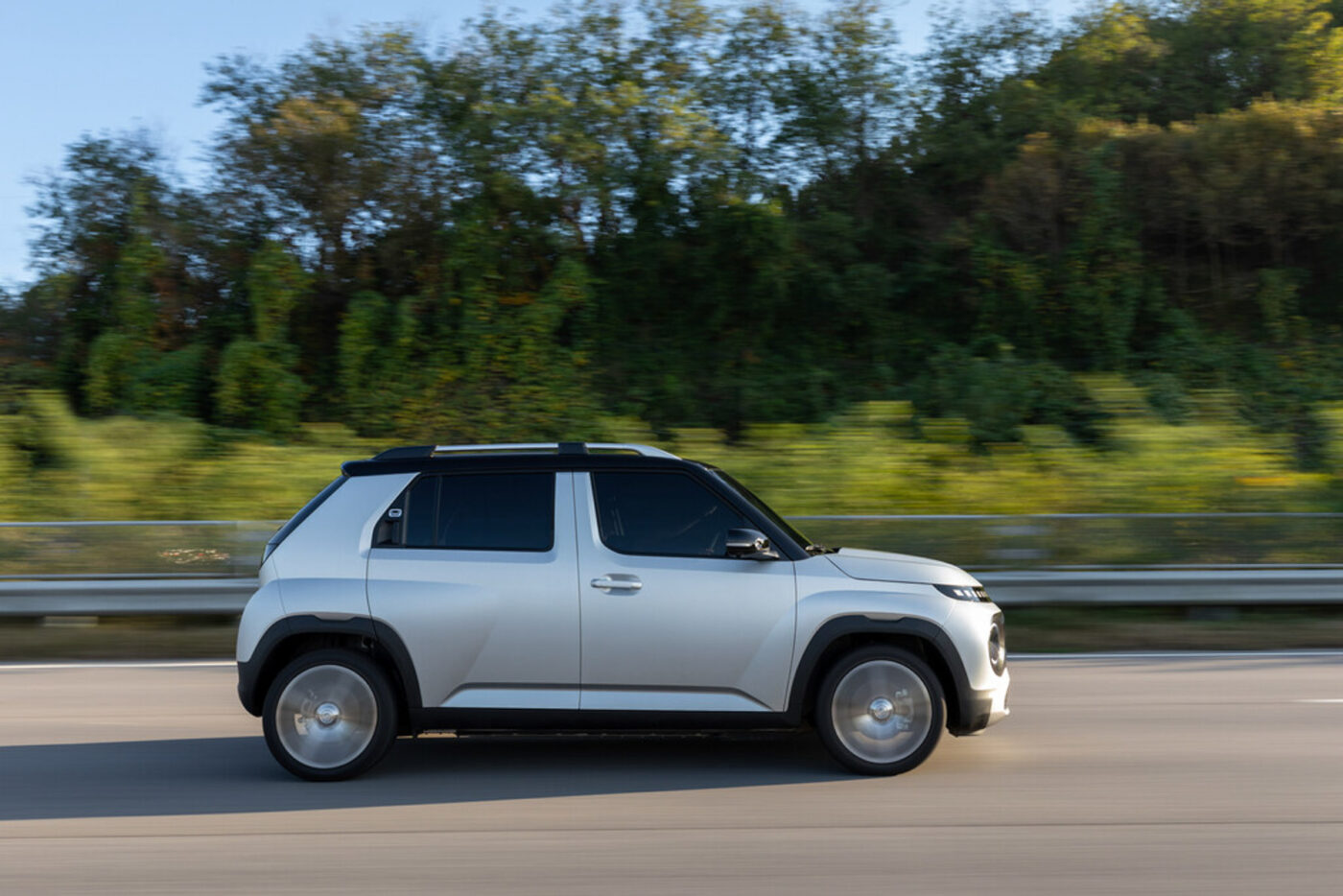
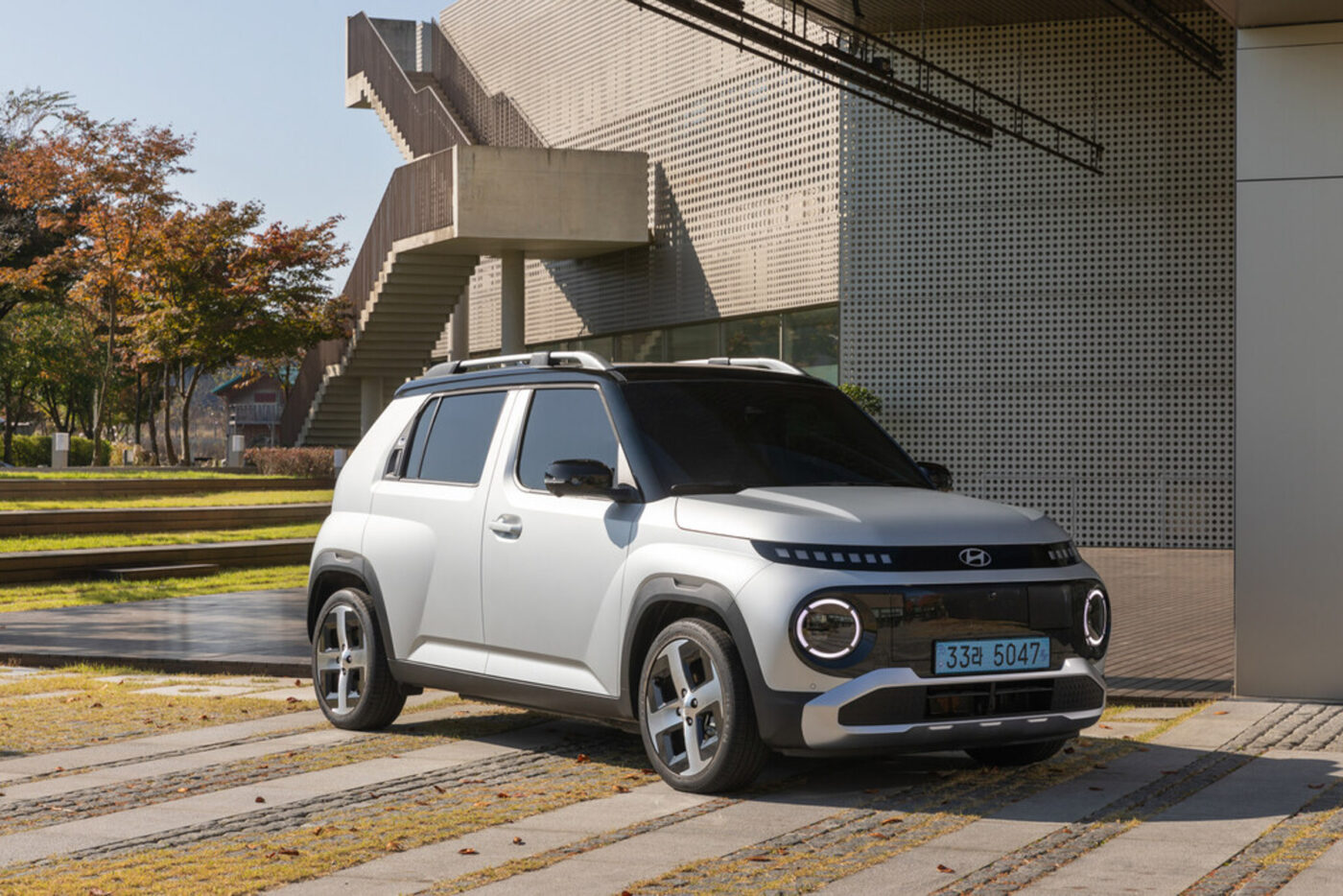
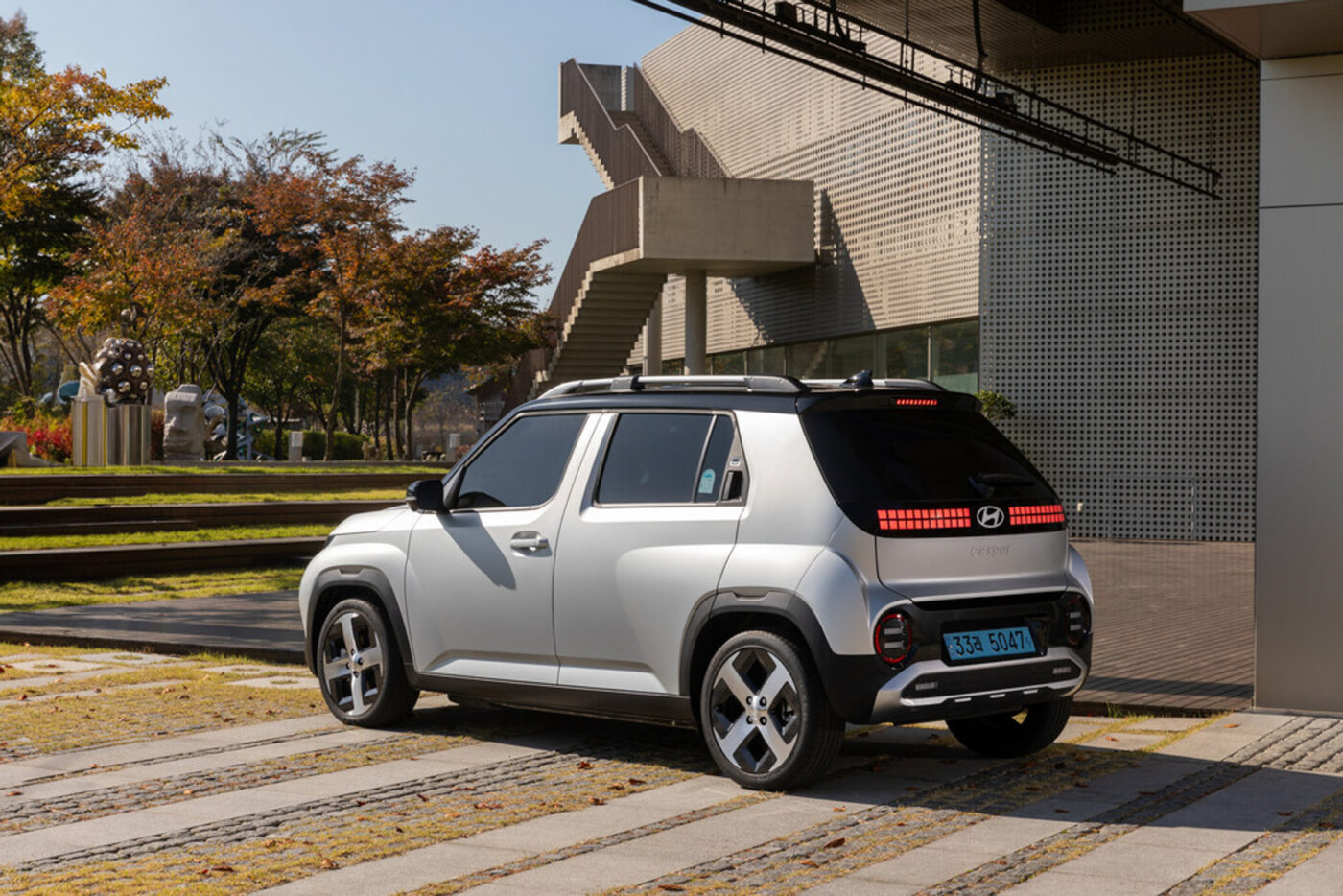
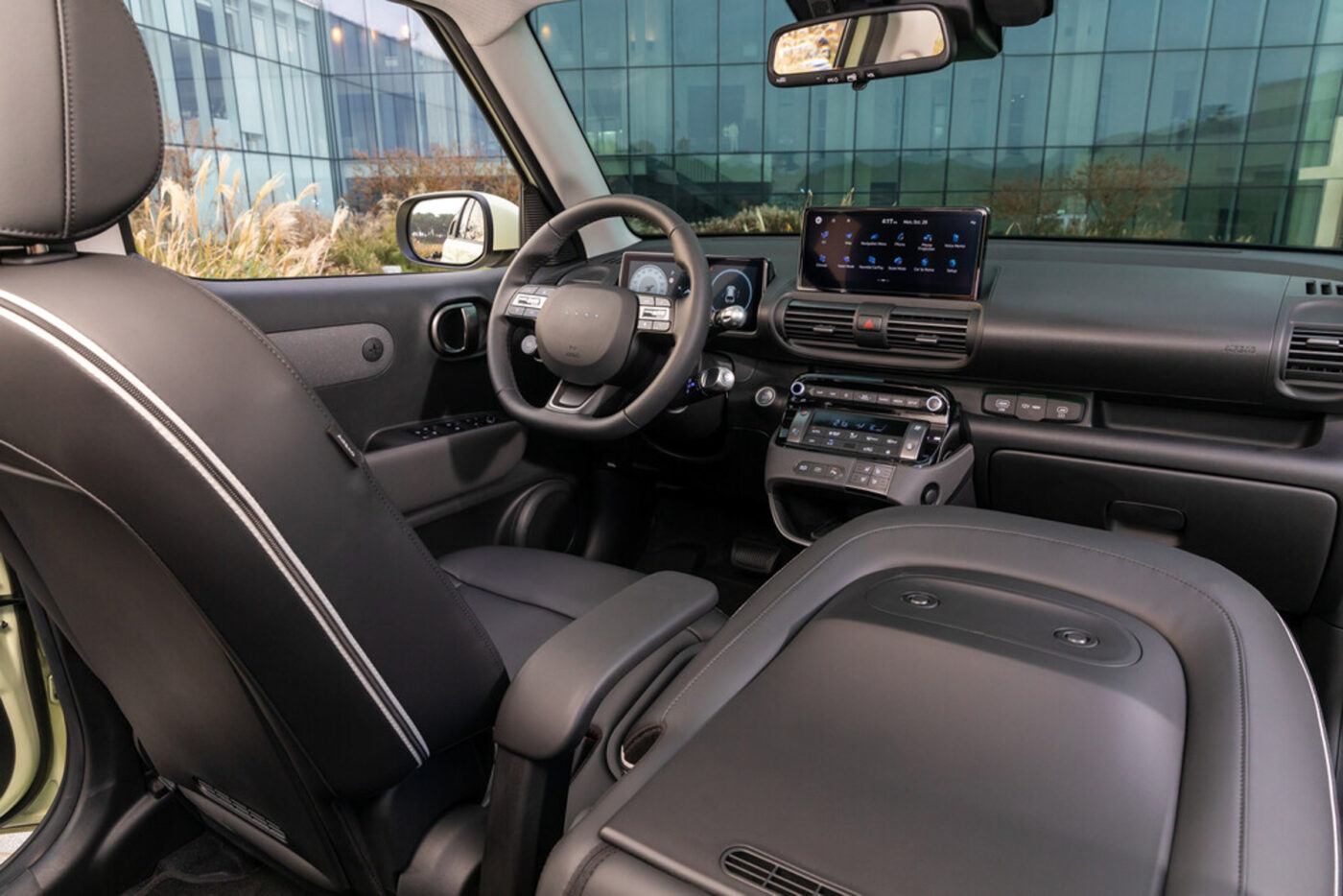
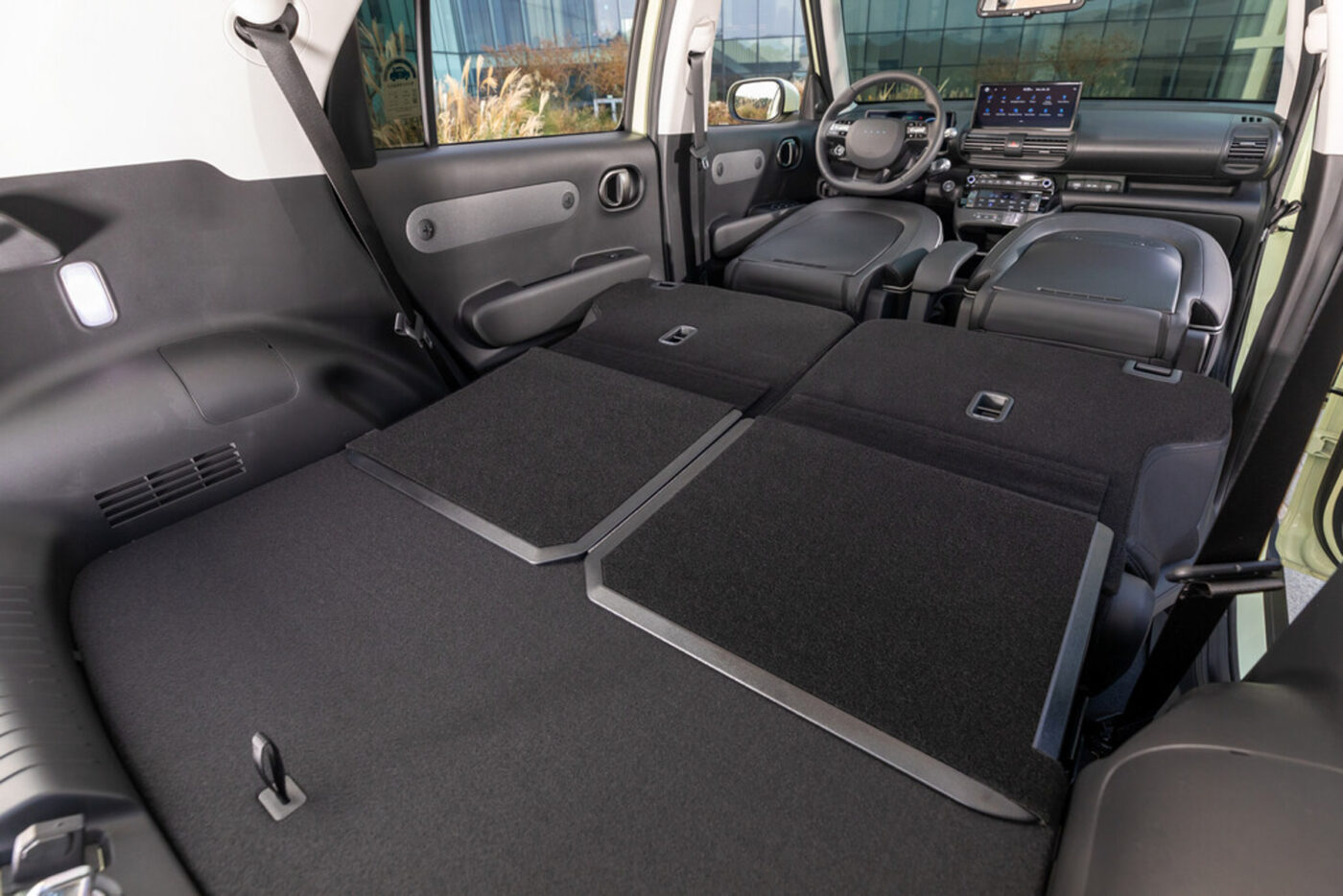
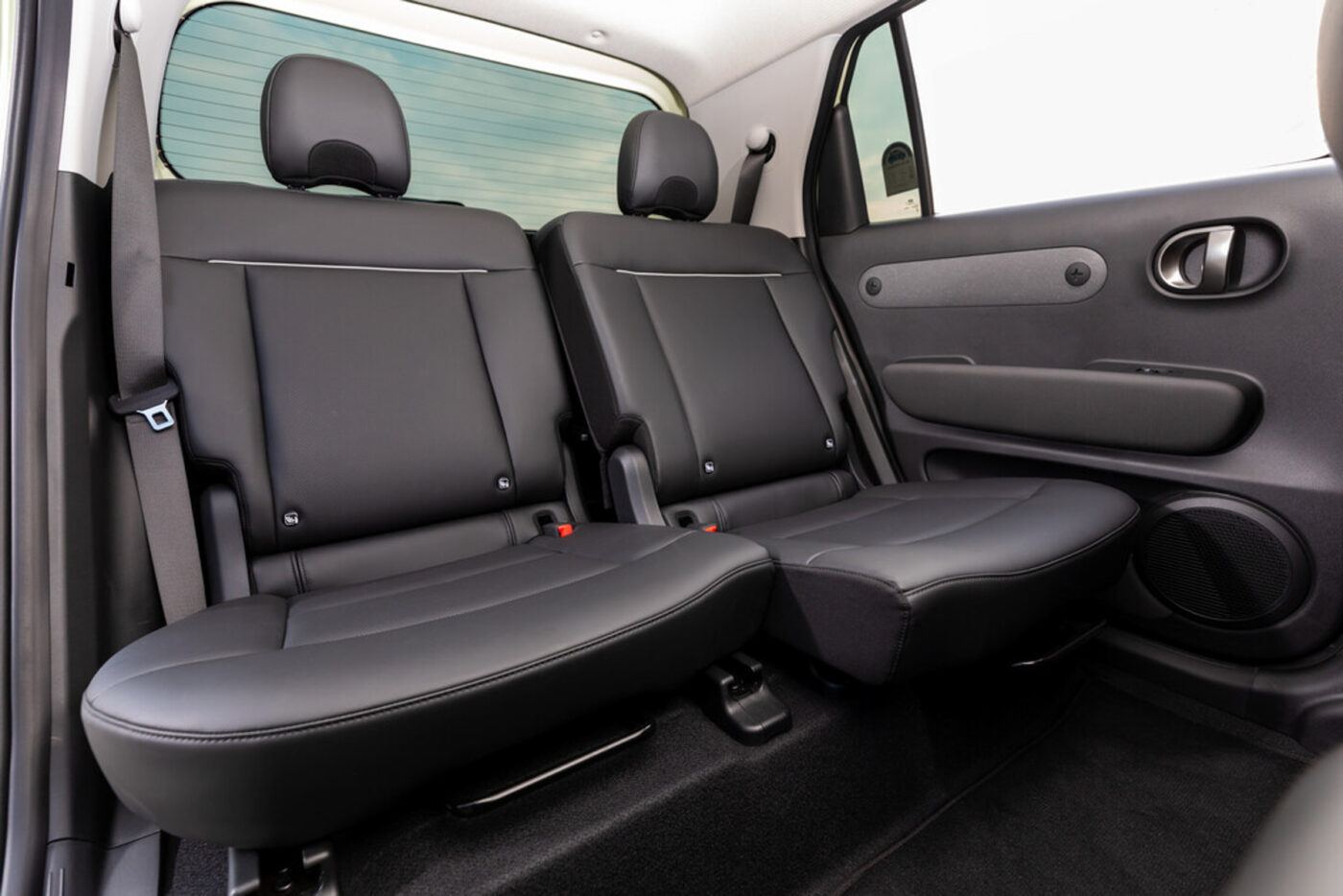
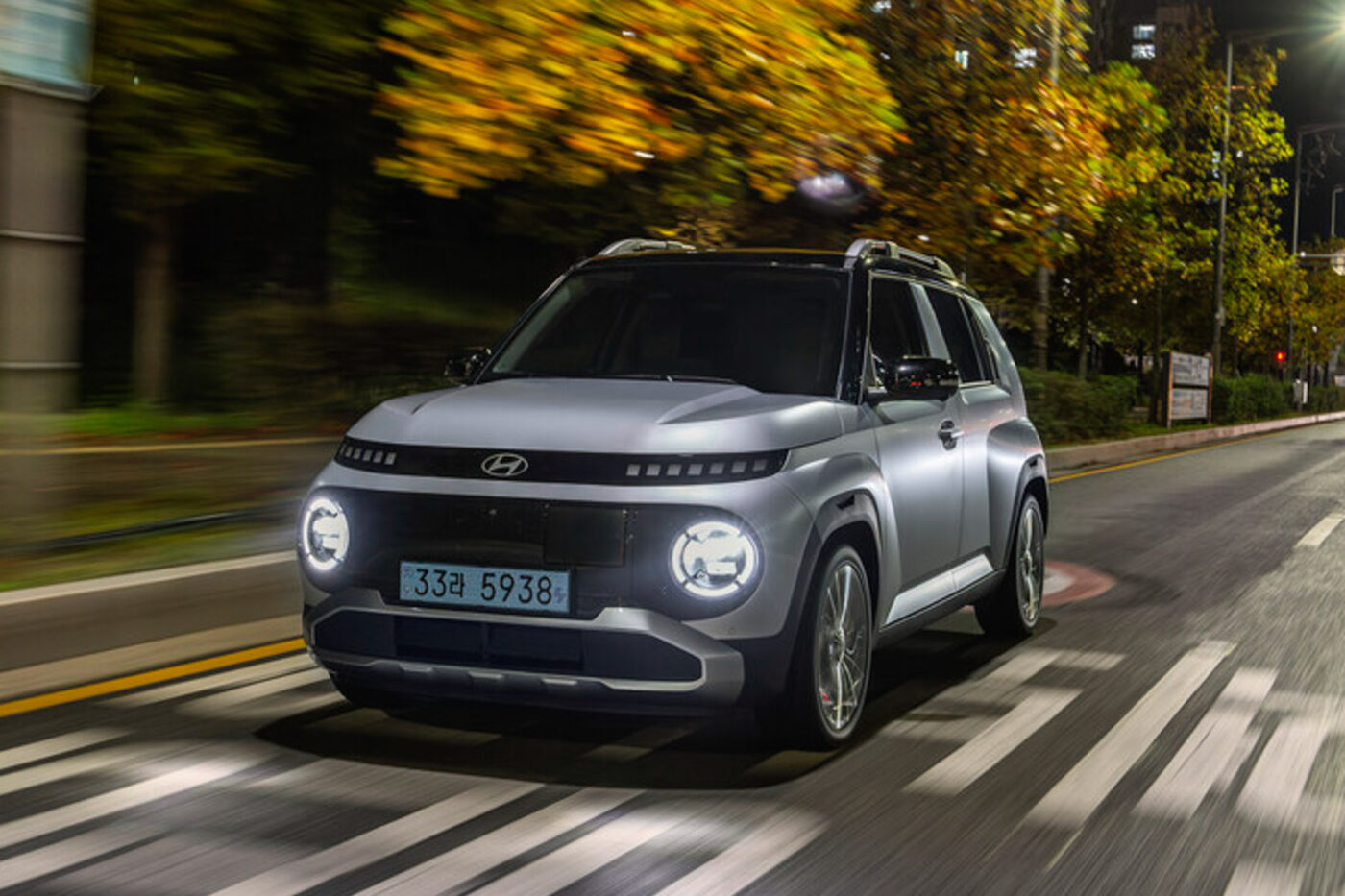
Even more convincing than the appearance is the ambience, which offers more clever charm than the Kona, for example, despite the many shared parts. Admittedly, the abundance of plastic looks a little cheap in places, but this is redeemed by elements such as the two large screens behind and next to the steering wheel and an astonishing number of options, ranging from the air-conditioned seats to the heated steering wheel. The small car also sports a rear seat that slides16 centimetres in two halves, and the two front seats can grow together with a cushion in between for snuggling up for those who want to get even closer or fold all the seats down to form a large reclining area to use the charging break for a decent nap.
With the kind of smart accessories you might expect from the Simply Clever team at Skoda, the half a dozen or so nifty compartments in the cockpit are joined by nice little details like the clipboard with magnetic catches that can be mounted as a table for the rear seat passengers or as a shelf for a laptop in the front seats when charging. Where others only have decorative strips, you can mount consoles that function like wallets or pinboards in the doors of the Inster.
Despite the loving detail that usually comes from an electric native, the car is no newcomer. In Korea, this charming, modestly-sized car has already been on the market for two years as the Casper – a smaller, combustion engine model – where it’s the only small car in the top ten of new registrations there. For its transformation to an electric car, the Korean company has stretched the wheelbase and length by around 20 centimetres each (almost eight inches) to create space in the floor for the battery.
The basic version has an energy content of 42 kWh and is sufficient for 300 standard kilometres (around 186 miles). If you spend a little more than 25,000 euros, you get 49 kWh and can expect a range of 370 kilometres (about 230 miles). At the premiere in June, the Korean company still stated the provisional range of 355 kilometres (about 221 miles). Hyundai offers choices with the motors and, depending on the battery, installs magnetic motors with 71 kW for 140 km/h (87 mph) at best or 85 kW for a maximum of 150 km/h (93 mph).
While the Inster is brisk and cheeky in the city and, of course, incredibly easy to handle, it also makes a surprisingly mature impression on the highway, where it bravely holds its own. It’s only when things get really fast or rather twisty that the short wheelbase and narrow track bring the driver back to reality.
Deceleration is also the order of the day at the charging station because, while the maximum output of 11 kW at the wallbox is still acceptable, you can hardly speak of fast charging at 85 kW on direct current. But we have to look at the costs somewhere, the developers apologize. And because the batteries are so small, they can still advertise 30 minutes at best for the first 80 per cent charge level.
| Inster (small battery) | Inster (large battery) | |
|---|---|---|
| Power | 71 kW | 85 kW |
| Top speed | 140 kph | 150 kph |
| Acceleration | 11.7 s | 10.6 s |
| Battery | 42 kWh | 49 kWh |
| Range* | ca. 300 km | 370 km |
| Charging capacity AC | 11 kW | 11 kW |
| Charging time AC | 4 h | 4:35 h |
| Charging capacity DC | 73 kW | 85 kW |
| Charging time DC 10-80% | ca. 30 min | ca. 30 min |
*preliminary value
You also have to give the carmakers credit for the fact that they have otherwise made very few compromises and have put in more effort than most of their competitors, even with larger cars, especially those converted from a combustion engine model. That effort is reflected in the navigation with charge point planning and steering wheel paddles for recuperation control and one-pedal driving. That’s why the battery can also be preconditioned at the touch of a button for shorter charging times, the heat pump increases the efficiency of the air conditioning and, thanks to Vehicle-To-Load, the Inster becomes a mobile power bank for e-bikes and the like.
It seems unlikely that Hyundai is going to earn much from the Inster because the costs are high, and the price is still meant to be low. However, in view of the CO2 penalties coming in from 2025 onwards, electric registrations are more important than ever for the Korean company and may still pay off in the end, even with a lower return. It’s no coincidence that the European headquarters in Offenbach, Germany are already assuming that the Inster will soon be their most successful electric model. At the same time, just because Hyundai is pushing good things in small packages doesn’t mean they’ve taken their proverbial eyes off making bigger impressions. Next year, in response to the EV9 from sister brand Kia, Hyundai is launching the Ioniq 9, an electric luxury SUV that will become the brand’s flagship – and thus the great big cherry to top it all off.




1 Comment